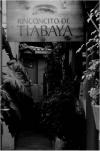Abstract
In recent years, food cultures have been accompanied by processes of economic and socio-cultural valorization which aretied to global market logics as well as to local dynamics rooted in strong social needs. Considered as resources, these culturalexpressions become vector of projects that go from initiatives in the tourist sector to other ones more ambitious when it comesto socio-economic development strategies at the local level. Peruvian food has integrated a discourse asserting that its heritagefeatures, if based on a balance between conservation and adaptation to international markets, could bring considerablepositive effects on Peru’s economy. In the context of the recent application of Peruvian cuisine to the unesco’s RepresentativeList of Intangible Heritage, and through the analysis of its argumentation, this article invites reflection on the social implicationsbehind the enthusiasm for the heritagization of live-forms.Apuntes is registered under a Creative Commons Attribution 4.0 International Public License. Thus, this work may be reproduced, distributed, and publicly shared in digital format, as long as the names of the authors and Pontificia Universidad Javeriana are acknowledged. Others are allowed to quote, adapt, transform, auto-archive, republish, and create based on this material, for any purpose (even commercial ones), provided the authorship is duly acknowledged, a link to the original work is provided, and it is specified if changes have been made. Pontificia Universidad Javeriana does not hold the rights of published works and the authors are solely responsible for the contents of their works; they keep the moral, intellectual, privacy, and publicity rights.
Approving the intervention of the work (review, copy-editing, translation, layout) and the following outreach, are granted through an use license and not through an assignment of rights. This means the journal and Pontificia Universidad Javeriana cannot be held responsible for any ethical malpractice by the authors. As a consequence of the protection granted by the use license, the journal is not required to publish recantations or modify information already published, unless the errata stems from the editorial management process. Publishing contents in this journal does not generate royalties for contributors.


